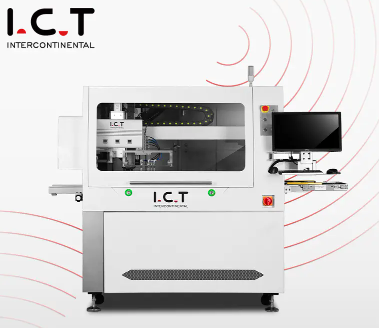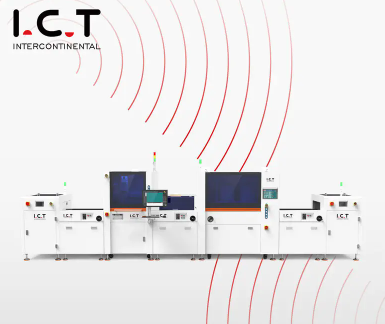Views: 0 Author: Site Editor Publish Time: 2025-08-04 Origin: Site







Are you confident in the quality of your PCBA? Poor PCBA quality can result in device failures, costly repairs, and dissatisfied customers. Ensuring top-notch PCBA quality is essential for reliable performance, long-term success, and minimizing defects. In this article, we’ll guide you through the critical steps in the PCBA quality assurance process, from conducting thorough supplier audits to performing First Article Inspection (FAI). You’ll learn how to evaluate suppliers effectively, identify potential risks, and implement comprehensive inspections to guarantee the highest quality standards for your production.

Defining PCBA Quality:
What constitutes quality in PCBA?
The role of PCBA in the overall performance of electronic devices.
Why Quality Matters in PCBA?:
How poor PCBA quality can lead to device malfunctions or failures.
The cost of poor quality: Returns, replacements, and warranty claims.
A supplier audit is a detailed evaluation of a potential or existing PCBA supplier’s capabilities. It ensures the supplier can meet your production standards and delivers the desired quality. Auditing is essential before selecting a PCBA supplier to avoid future problems and ensure reliable manufacturing.
Ensuring Production Standards: A supplier audit helps verify that the supplier can consistently meet your requirements for product quality and performance.
Preventing Future Issues: Auditing provides a chance to spot potential problems early. It’s easier to fix issues before production begins.
During a PCBA supplier audit, the following areas should be thoroughly assessed:
Manufacturing Capabilities: Evaluate the supplier’s production capacity, equipment, and technology. Are they equipped for your production volume and complexity?
Quality Management Systems: Check if the supplier follows established quality standards like ISO 9001, IPC, and other relevant certifications. This ensures their processes align with industry norms.
Compliance Checks: Verify that the supplier complies with critical regulations like RoHS (Restriction of Hazardous Substances) and REACH (Registration, Evaluation, Authorization, and Restriction of Chemicals). This helps ensure the parts are safe and compliant.
Storage and Handling of Components: Assess how components are stored and handled. Proper storage is crucial to avoid damage or contamination, especially for sensitive parts like moisture-sensitive devices.
A supplier audit helps you assess whether a PCBA supplier has the capacity, quality systems, and compliance processes to meet your standards.
It’s a critical step to prevent production disruptions and ensure high-quality PCBA products.
Pre-Audit Preparation:
What documents to prepare.
Key Areas to Assess During an Audit:
Manufacturing processes, equipment, and technologies used.
Supplier’s workforce competence and experience.
Audit report requirements.
Storage Conditions and Component Handling:
Ensuring proper storage of components (e.g., moisture-sensitive devices, temperature controls).
Regular checks on environmental conditions and cleanliness.
Documentation is the foundation of PCBA quality control. It guides the entire production process, ensuring everything is done according to plan. Clear, accurate documentation helps avoid mistakes and ensures each product matches the design specifications.
Role of Documentation in Quality Control:
Process Flow: Documentation explains the steps required in the assembly process. Following it ensures no steps are missed.
BOMs (Bill of Materials): These documents list the components needed for the assembly. It ensures that the right parts are used.
Product Drawings: These show how parts should be placed and connected. They’re a crucial reference during production. By keeping all documentation up-to-date and consistent, you maintain quality across different production batches.
When reviewing PCBA documentation, focus on accuracy and completeness:
Verify Accuracy: Make sure the documents reflect the correct design and specifications. Any error could lead to faulty assemblies.
Ensure Up-to-date Information: Check if the documentation has been recently updated to reflect the latest changes in design or parts.
Check for Completeness: Ensure all necessary details, such as assembly steps, parts, and tolerances, are included. Look for discrepancies between the design documents and the physical product. If something doesn’t match, it needs to be addressed before proceeding with production.
First Article Inspection (FAI) is the process of validating the first batch of a product after assembly. This inspection ensures that the initial units meet design specifications before mass production begins.
Purpose of First Article Inspection (FAI):
Validating the Initial Production Run: FAI checks whether the first products are made according to the approved design, preventing mistakes in large-scale manufacturing.
Establishing a Process of Record (POR): The first article sets the baseline for future production. It creates an official record that can be referenced throughout the entire production process to ensure consistency.
Ensures Design Specifications Are Met: It verifies that the first batch matches the design specifications. Any mismatch is identified before production scales up.
Identifies Manufacturing Errors Early: By inspecting the first batch, any potential issues with the manufacturing process can be fixed early, avoiding costly mistakes later. FAI is your first line of defense in catching design and production errors early in the process.
Inspection Checklist:
Measurable attributes: dimensions, resistance, voltage.
Manufacturing errors and corrections .
Supplier validation: matching parts and materials to their specifications.
Reviewing documentation clarity and addressing any discrepancies.
Tools for First Article Inspection:
Automated Optical Inspection (AOI), X-ray inspection, and visual inspection.
What Happens If Issues Are Found During FAI?
Corrective actions: modifying processes or adjusting design issues.
Re-inspection after corrections are made.
Ongoing quality control is essential for maintaining the consistency of PCBA throughout the production process. Various inspection methods help catch issues early and ensure each board meets the required standards.
Automated Optical Inspection (AOI):
AOI uses cameras to visually inspect the PCB for defects. It ensures accuracy by detecting misplacements, soldering issues, and other errors that may affect product performance.
Solder Joint Quality Testing:
Using X-ray inspection for BGA and other complex solder joints ensures that hidden issues are caught early. These tests help avoid failures that can affect product reliability later on.
Functional Testing and Burn-In Tests:
Functional testing ensures that the PCBA performs as intended under real-world conditions. Burn-in tests simulate long-term use to check for any early failures.
Record Keeping:
Proper documentation of test results and inspections provides traceability. This allows manufacturers to track quality over time and identify patterns that might indicate recurring issues.
Supplier Communication:
Regular communication with suppliers helps address any quality concerns quickly. Open channels ensure that any issues in production can be fixed before they escalate.
Using Advanced Inspection Techniques:
Combining AOI, X-ray, and ICT (In-Circuit Testing) improves overall quality control. These advanced techniques provide a comprehensive inspection process that catches both visible and hidden defects.
Regular Audits and Process Reviews:
It’s essential to conduct periodic re-audits of suppliers and review production processes. This helps ensure ongoing quality and allows manufacturers to stay proactive in addressing any emerging issues.
Evaluating a supplier’s delivery performance is crucial for ensuring smooth production. On-time deliveries, flexibility, and the ability to handle urgent requests are key indicators of a reliable supplier.
Key Metrics to Assess:
On-time Delivery (OTD): Track the percentage of orders delivered on time. A high OTD rate (above 90%) indicates reliability.
Delivery Flexibility: Evaluate the supplier's ability to accommodate urgent requests or changes in the production schedule.
Response to Urgent Requests: How quickly does the supplier respond to last-minute changes or emergencies? A supplier's flexibility can significantly impact your production timeline.
Capacity Management and Scalability:
A good supplier must manage fluctuations in demand effectively. They should have buffer strategies in place to handle both small and large orders, ensuring consistent delivery even during high-demand periods.
Using ERP/MES for Tracking Supplier Performance:
Real-time Tracking: Integrating systems like ERP (Enterprise Resource Planning) and MES (Manufacturing Execution System) helps track orders, production status, and defect rates in real-time.
Ensures Timely Delivery: Real-time data helps identify delays and other issues early, allowing corrective action to be taken before affecting delivery times.

When choosing a PCBA supplier, it's important to be aware of potential red flags that could signal future issues. These problems can affect the quality, timeline, and overall success of your production.
Slow Communication:
If a supplier takes too long to respond to RFQs (Requests for Quotation) or provides unclear answers, it’s a sign of poor service. Effective communication is essential for smooth production and timely deliveries.
Outdated Equipment:
Suppliers relying on old or inadequate equipment may struggle to meet precision requirements. This can lead to defects, delays, and quality inconsistencies. Make sure the supplier’s equipment is up-to-date and capable of handling the specific demands of your project.
Inconsistent On-Time Delivery (OTD) Performance:
Low OTD rates are a serious red flag. A supplier with inconsistent delivery times can disrupt your production schedule, leading to delays and potentially increased costs. A reliable supplier should consistently meet delivery deadlines.
Lack of Design for Manufacturability (DFM) Support:
Suppliers who don’t offer DFM feedback may not be fully invested in improving your product. DFM support helps optimize designs for cost-efficiency and manufacturability, and its absence could mean the supplier is not fully engaged in your project’s success. By being vigilant about these issues, you can avoid complications down the line and ensure a smoother production process.

To ensure PCBA quality, focus on key steps: supplier audit, documentation review, FAI, ongoing quality control, and delivery performance. Choosing a reliable supplier is crucial for a successful manufacturing process. A good supplier ensures consistent quality and meets production timelines. By prioritizing quality at every step, you guarantee long-term reliability and cost-effectiveness for your PCBA projects.
A: PCBA quality control involves monitoring every stage of production, from design to assembly, to ensure the final product meets specifications. It includes visual inspection, testing, and using tools like AOI and X-ray for defect detection.
A: FAI ensures the first batch of a PCBA matches design specifications before mass production. It identifies early manufacturing errors, preventing costly mistakes and ensuring product conformity.
A: Supplier audits should be conducted regularly, especially before starting new production runs. Annual audits are standard, but more frequent checks may be needed for new or underperforming suppliers.
A: Common causes include poor soldering, component misplacement, outdated equipment, and inadequate quality control. Regular inspections, proper training, and updated equipment can reduce these issues.
A: Improve efficiency by streamlining processes, adopting advanced inspection technologies (AOI, X-ray), maintaining clear communication with suppliers, and optimizing production flow.